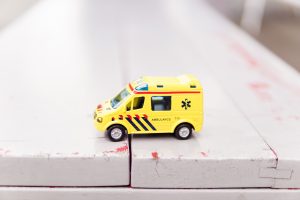 Know What to Do in Certain Emergency Situations
Know What to Do in Certain Emergency Situations
Have you ever seen someone pass out in front of you? Has anyone around you gotten hurt, and you didn’t know how to help? In rare cases, accidents occur, and you may not be experienced enough to help them at a crucial moment. It may include stopping blood flow, fixing a dislocated arm, or even someone needing CPR. Today, I will go through different emergencies and how you can help handle them promptly to limit damage and possibly save a life.
CPR
If you have ever been in a place where someone faints, there are a few steps you will want to take. First, lay the person flat on their back and elevate their legs to restore blood flow. Next, make sure they are breathing. Once you do this, you will want to attempt to revive them, but first, make sure you call an ambulance and alert them of the emergency.
Have you ever done CPR before? If not, it is critical to do it exactly right, and you can find a video here.
- Place the heel of your hand on the breastbone at the center of the victim’s chest. Place your other hand on top of your first hand and interlock your fingers.
- Position yourself with your shoulders above your hands.
- Using your body weight (not just your arms), press straight down by 5-6cm (2-2.5 inches) on their chest.
- Keeping your hands on their chest, release the compression and allow the chest to return to its original position.
- Repeat these compressions at a rate of 100 to 120 times per minute until an ambulance arrives or you become exhausted.
Cut and bleeding wounds
If you happen to cut yourself or someone begins to bleed out, it’s important to stop the bleeding. The best way to stop continuous bleeding is to apply direct pressure on the wound with a cloth of some type until the bleeding stops. If it seeps through, remember to add more material don’t remove it. The best thing to clean any of these cuts with when they stop bleeding is hydrogen peroxide. You will also want to protect the wound with a bandage, changing it daily to keep it dry and clean. Be sure to call 911 if bleeding continues and alert them of your emergency.
Dislocations
Have you ever dislocated a bone and didn’t have anyone around to help put it back in place? It is important to know that different bones need to be treated in different ways. This tip will be for shoulders, and remember if you can receive medical attention from an expert, always choose that option first unless it’s an emergency.
First, have the person lie on his back on a firm surface. While they do this, slowly guide their arm horizontally away from the body until it’s at about a 45-degree angle. Grab their hand and pull it toward you firmly and steadily keeping a forty-five-degree angle. You are making the head of the humerus move beyond the lip of the shoulder cup so it can align itself.
Choking
The Heimlich Maneuver is the most common when someone is choking. You would be surprised at how many people know what to do in this situation. Choking happens when something becomes lodged in the throat or windpipe, blocking airflow. The first thing to try is giving back blows between the shoulder blades. If this doesn’t help eject the object, stand behind the person and do an abdominal thrust. Place a fist above the person’s navel, and grab that fist with your other hand. Pull inward and upward like picking someone up and do this five times. Continue this until the object is coughed up.
I hope these tips will come in handy during emergency situations! Stay tuned for more health-related articles.
Have Health Insurance Questions?
We hope that this information on emergency was helpful for you.
Insurance is oftentimes overwhelming, and we want to shed light on the industry by answering your questions. Comment below and your question may be the topic of our next post!
If you liked this article, share it with your friends!
Empower Brokerage wants to help you find the insurance coverage you need and help you save money getting it. Stay on top of your health and give us a call at (844) 410-1320.
Get affordable health insurance quotes by clicking here.
See our other websites:
This article was updated on updated on 8/19/2024.

